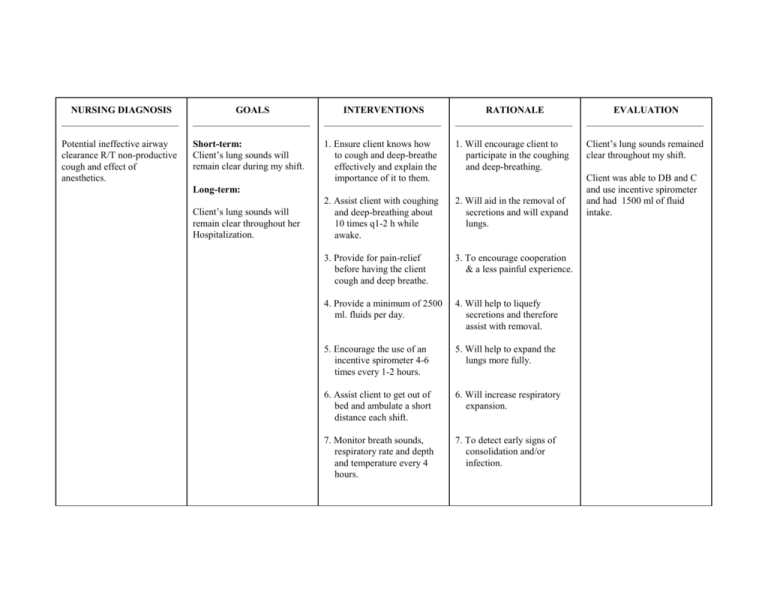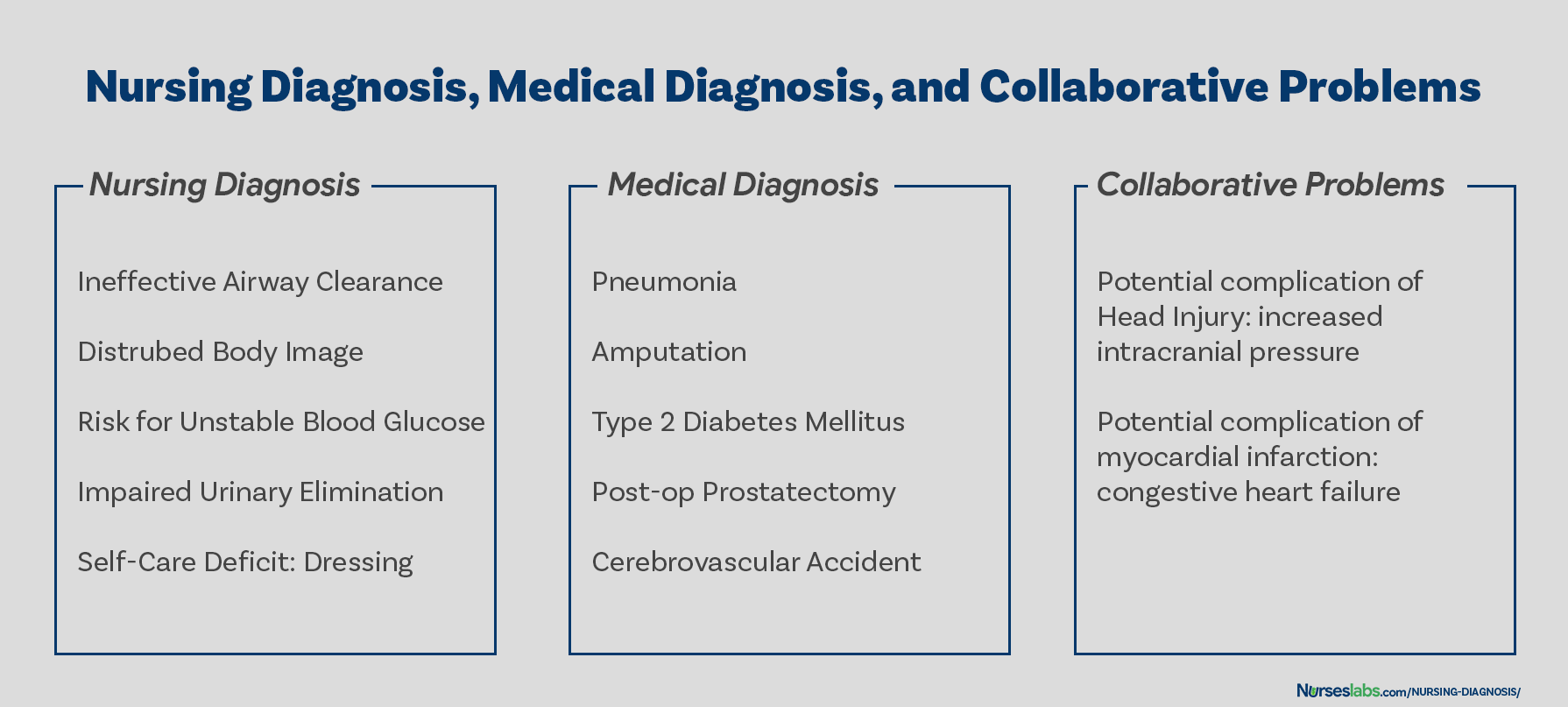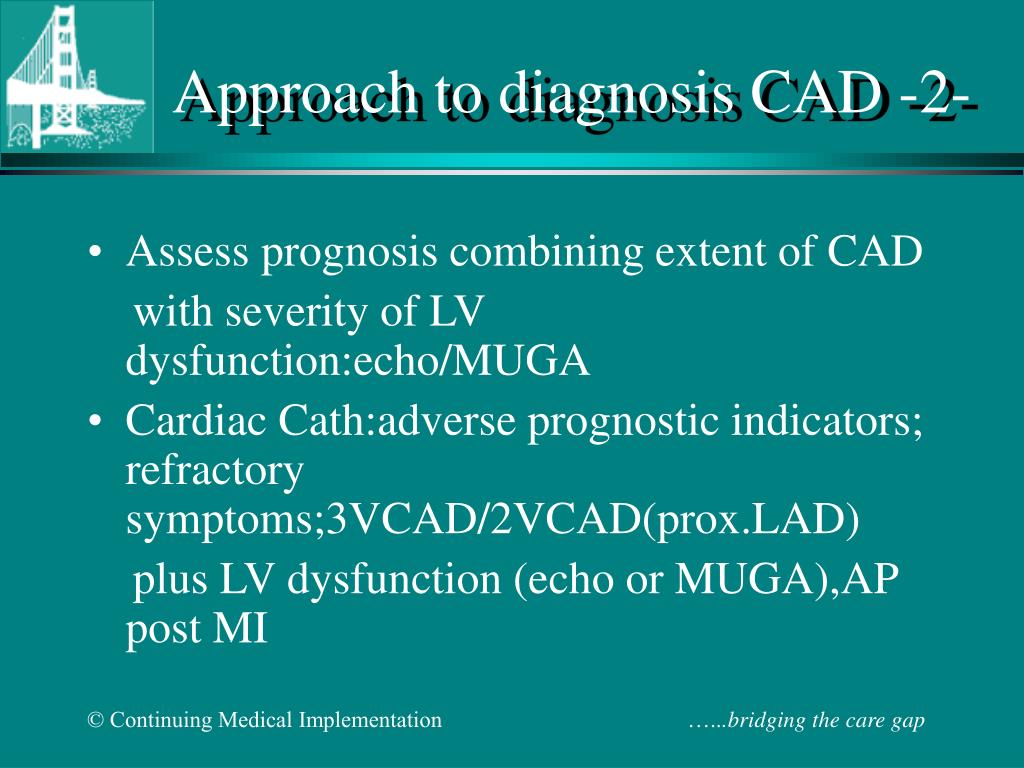
NURSING DIAGNOSIS
Nursing Diagnosis Nursing Goals Nursing Interventions and Actions 1. Initiating Interventions for Decrease in Cardiac Output 2. Monitoring Diagnostic Procedures and Laboratory Studies 3. Administering Medication and Providing Pharmacological Interventions 4. Maintaining or Improving Respiratory Function 5.

Copd Nursing Care Plan Sample Best Image Nanda Nursing Diagnosis For Vrogue
Coronary artery disease (CAD) is a condition that affects the coronary arteries, which are the blood vessels that supply oxygen-rich blood to the heart. When these arteries become narrowed or blocked, it can cause chest pain (angina) or even a heart attack.

Coronary Artery Disease Cad Nursing Diagnosis Care Plan Nursestudy Net PELAJARAN
Coronary artery disease (CAD) is a medical condition which involves damage to the major blood vessels that provide the heart with oxygen and nutrients. CAD is usually caused by cholesterol deposits called plaques that cause inflammation and narrowing of the coronary arteries.

SOLUTION Nursing Diagnosis Fn Studypool
Coronary artery disease is a condition that puts you at risk for heart attack and other forms of heart disease. In people who have coronary artery disease, the arteries that supply blood to the heart get clogged with fatty deposits ( figure 1 ). Other names for this disease are "coronary heart disease" or just "heart disease."

NURSE UN 311 A&E I Comprehensive Test bank Latest Updated Already Passed in 2023 Test bank
This procedure is done to open clogged heart arteries. It may also be called percutaneous coronary intervention (PCI). The heart doctor (cardiologist) guides a thin, flexible tube (catheter) to the narrowed part of the heart artery. A tiny balloon is inflated to help widen the blocked artery and improve blood flow.

Nursing Diagnosis Guide for 2023 Complete List & Tutorial Nurseslabs The Ultimate Guide to
Coronary artery disease is a condition in which there is an inadequate supply of blood and oxygen to the myocardium. It results from occlusion of the coronary arteries and results in a demand-supply mismatch of oxygen. It typically involves the formation of plaques in the lumen of coronary arteries that impede blood flow. It is the major cause of death in the US and worldwide. At the beginning.

Texas A&M University, KingsvilleNURS MISC391320168TestBankforFundamentalsofNursin
Coronary artery disease is very common. Over 18 million adults in the U.S. have coronary artery disease. That's roughly the combined populations of New York City, Los Angeles, Chicago and Houston. In 2021, coronary artery disease killed 375,500 people in the U.S. Coronary artery disease is the leading cause of death in the U.S. and around the.

Nursing diagnosis, implenenting, and evaluation Bingo Cards WordMint
Diagnosis, management and nursing care in acute coronary syndrome | Nursing Times. Abstract Acute coronary syndrome refers to a range of potentially life-threatening conditions that affect the coronary artery blood supply to the heart,

SOLUTION Nursing diagnosis Studypool
Coronary artery disease (CAD) is one of the leading causes of death. Percutaneous coronary intervention (PCI) is a non-surgical, invasive procedure with the goal of relieving the narrowing or occlusion of the coronary artery and improve blood supply to the ischemic tissue. This is usually achieved by different methods, the most common being ballooning the narrow segment or deploying a stent to.

nursing diagnosis care plan pediatrics HEA 145 Studocu
Coronary artery disease (CAD) involves impairment of blood flow through the coronary arteries, most commonly by atheromas. Clinical presentations include silent ischemia, angina pectoris , acute coronary syndromes ( unstable angina , myocardial infarction ), and sudden cardiac death .

10 Nursing Assessment Mnemonics You Should Know Now
Coronary artery disease (CAD) is a term used to describe conditions that affect the arteries that provide nutrients, blood, and oxygen to the heart. Atherosclerosis, a known cause of CAD, is characterized by lipid deposits within the walls of the arteries. These plaques narrow arteries, obstructing blood flow.

Nursing Care Plan Risk For Infection Table 5 From Nursing Diagnoses Vrogue
Nursing Care Plan for Acute Coronary Syndrome 2. Risk for Decreased Cardiac Output. Nursing Diagnosis: Risk for Decreased Cardiac Output related to Changes in Heart Rate and Rhythm. Desired Outcome: The patient will be able to maintain stable cardiac output as evidenced by a normal heart rate without dysrhythmias.

What is a Nursing Concept Map? Examples & Templates Nurses News Hubb
Coronary artery disease (CAD) is a duration used the describe conditions that affect this arteries that provide nutrients, blood, and sufficient at this heart. Coronary artery disease (CAD) is a terminology used to describe conditions that influencing the arteries that provide nutrients, blood, and amount for to heart.

SOLUTION Nursing diagnosis Studypool
1. Managing Acute Chest Pain and Discomfort 2. Administering Medications and Providing Pharmacologic Interventions 3. Decreasing Oxygen Demand and Managing Decreased Cardiac Output 4. Monitoring and Preventing Potential Myocardial Complications 5. Providing Emotional Support and Reducing Anxiety 6.

Icd 10 Code For Cad With Chest Pain
Coronary artery bypass graft (CABG), often known as heart bypass surgery, is a medical procedure used to enhance blood flow to the heart. This procedure is beneficial in managing atherosclerosis, a form of coronary artery disease (CAD).

Nursing Diagnosis Basics Nurse Key
Evaluation Algorithm for Patients with suspected ACS at Intermediate Risk with No Known CAD, Figure 10. Evaluation Algorithm for Patients with suspected ACS at Intermediate Risk with Known CAD, Table 9. Differential Diagnosis of Noncardiac Chest Pain Accompanying Symptoms. Chest pain is the dominant and most frequent symptom for both men and